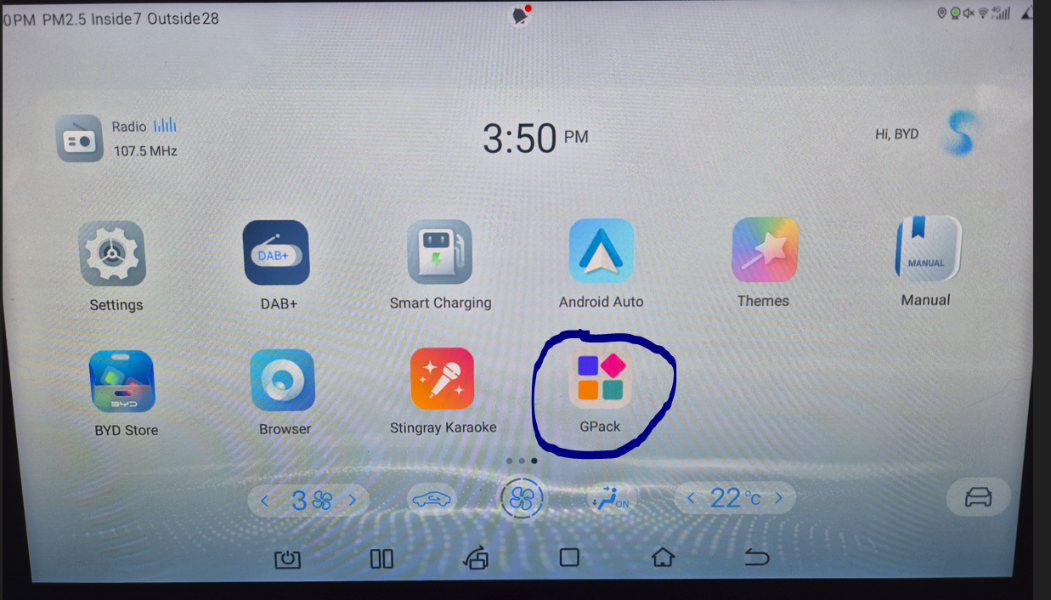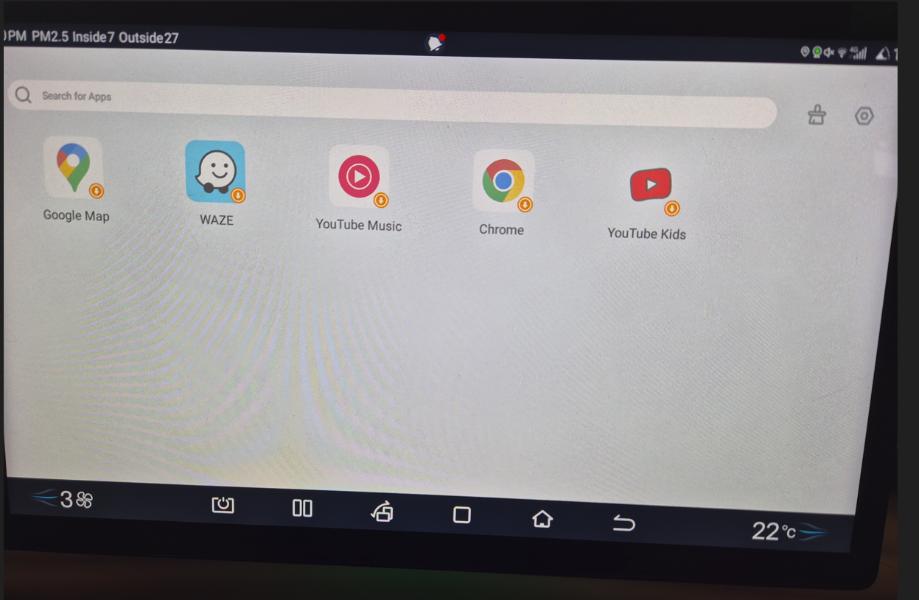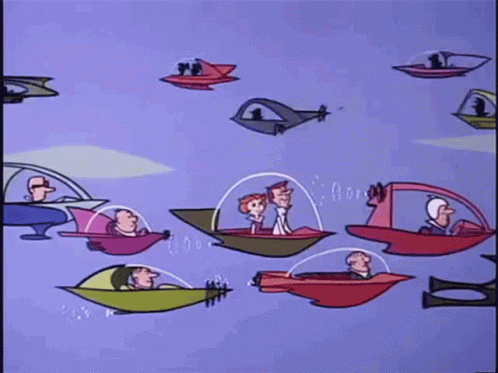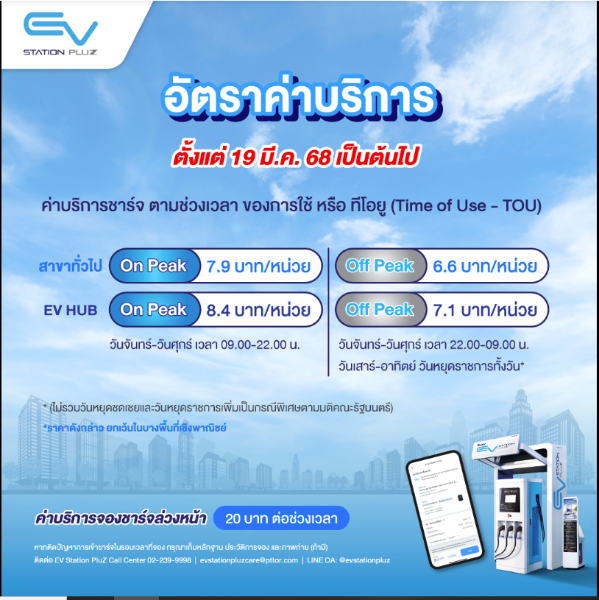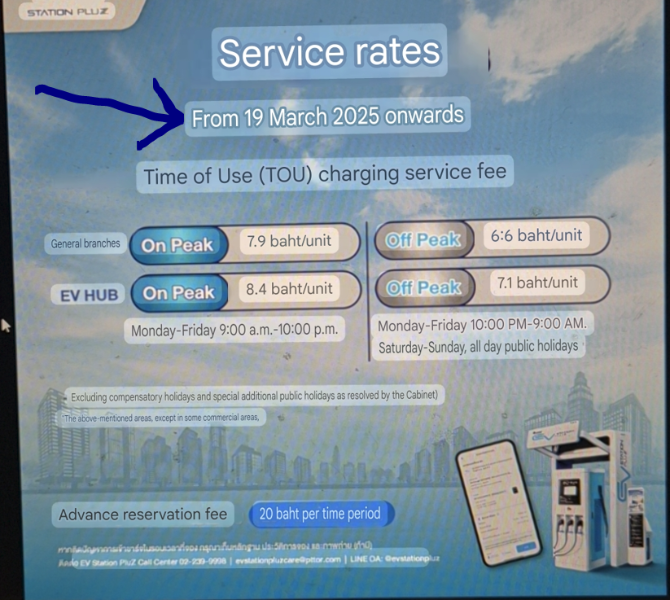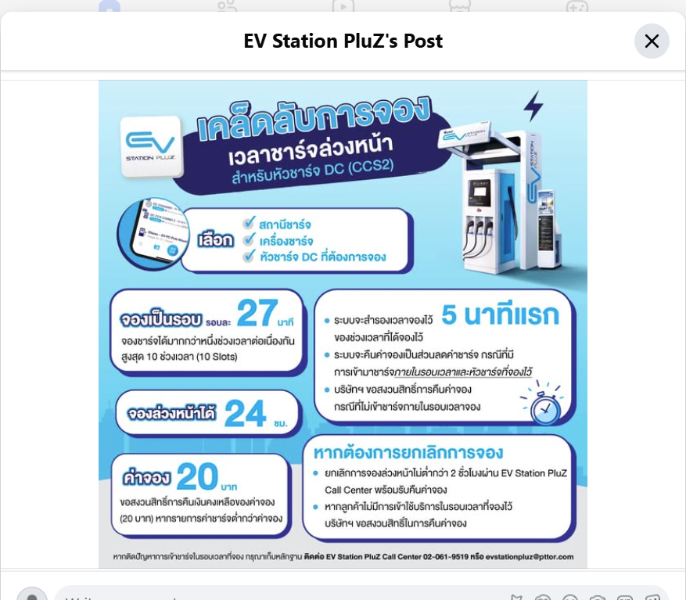-
Posts
29,148 -
Joined
-
Last visited
Content Type
Events
Forums
Downloads
Quizzes
Gallery
Blogs
Everything posted by Pib
-
Whoops...typo...fat fingers on the keyboard...it's 126, not 127, individual blade batteries/cells in the Atto Extended Range 60.5KWH battery pack.
-
I think this is just part of Audi's "optional" Audi Connect Function on Demand which allows a person to buy "upgrades/more features" to certain functions on their Audi.....this program has been around for years. It's purely optional. It's kinda like if you want to pay for more ringtones on your smartphone, buy addtional stickers/emojis for some phone apps like LINE, upgrade to ad-free Youtube, upgrade the GPS map system, add more options for turn signals, etc...etc...etc. More and more electronics are now part of newer cars (EV and ICEV).....electronics which can do whiz-bang things and also connect to the internet.....opens up new revenue sources for car manufacturers. https://www.audiusa.com/en/inside-audi/innovation/audi-connect/audi-connect-function-on-demand/
-
No...I haven't got a chance to play with GPack....it's low on my list of things to do.
-
Funny you should mention an Riddara RD6 as one of my neighbor's on my 10 houses soi just drove to his house in a brand new, red tag Riddara RD6 truck....a green color that really catches your eye. The hum of its A/C was very obvious as it drove by me. He's in his front yard right now trimming some small trees....he comes by every few weeks for a few hours to check on the house as he's been trying to sell it for years (at a overpriced amount....which is why it hasn't sold yet)....his primary home is elsewhere in Bangkok. Throughout my large moobaan consisting of around 400 houses as I do my frequent dog walks around the moobaan I'm slowly seeing more and more BEVs parked in driveways....the transition from ICEV to EV is slowly and steadily continuing.
-
I just hope PTT does not decide to stop accepting debit cards like Elexa apparently has. Since PTT only has a card payment option (no QR code or wallet method) if they stop accepting debit cards and use of foreign "credit" cards for online payment can often result in the payment being declined then loss of PTT charging would be bad since they have the most chargers especially along major roads at many of their PTT dino fuel stations.
-
For those of you that are registered with/use the Elexa charging app I found out yesterday when stopping at an Elexa charger to do a few minutes test charge that now "before the charging begins" Elexa does a check of the credit/debit cards you have in your payment profile by doing a small charge/deduction which is immediately followed by refund of that small amount. If that fails you "can not" begin a charging session.....and the payment via QR Code/PromptPay is gone. Summary: you can not begin the charging session, whereas, before the payment process didn't come into pay until the end of the charging session. I have two of my foreign/US Visa credit cards loaded in my Elexa payment profile...these had been successfully added probably 6 months ago. And I use to have my Bangkok Bank Mastercard "debit" card loaded but removed/deleted it from my Elexa profile several months ago after a fraudulent transaction for a few hundred baht from a Spotify transaction occurred (Bangkok Bank did refund that fraudelent charge) and I got a new debit card. I did not reload that in Elexa as I don't want to load any cards whenever an app has payment by QR Code/Payment or a Wallet function....less chance of the card info getting into the wild (i.e., the system it's loaded in getting hacked). Since Elexa had a QR Code/PromptPay payment option I didn't reload my new debit card. Anyway, when trying to start a charge when Elexa tried the test of the credit card before allowing the charging to begin, both cards failed the Elexa test...Elexa said the transaction was declined and one of my banks did immediately send me notice of they declining this foreign transaction. So, I tried re-adding my Bangkok Bank debit card....the Elexa process to add the card appears to fo fine, to include transaction verification via OTP, and Elexa gives a popup message of success in adding the card to my payment profile and says it can take up to one minute for the card to appear in the profile but unfortunately it never appears in the payment profile....it's like the process actually failed although Elexa says it was succeessful. I retried adding the debit card several time yesterday and this morning....around 6 times total.....same result every time. I contact both Bangkok Bank and Elexa customer service today...English speaking reps...and it showed Bangkok Bank had "approved" the Elexa test transactions to add the card, but apparently that is when Elexa determines it's a "debit" card and apparently will no longer add a debit card to your Elexa payment profile....it only wants "credit" cards. The Elexa customer service rep said this policy change occurred in March and have apologized for any inconvenience this may cause. I expect March timeframe is probably when the Elexa app updated to the new payment process. The Bangkok Bank rep also told me other customers have been calling them with the same Elexa issue....that is, Elexa will no longer accept their Bangkok bank debit card. I expect it's really "any bank's' debit card" based on the what the Elexa customer service rep told me about Elexa's policy change in March. I sure appears this policy change kicks debit card usage to the curb. Oh, well, since Elexa now apparently only allows "credit" cards if your foreign card-issuing bank doesn't decline the transaction you are still good to go. And I expect there will be no problem with a Thai bank credit card. But if you had been using your Thai bank "debit" card or payment via QR Code/PromptPay to pay for an Elexa charging session at the "end" of the charging process, you might want to go check and see if your cards still works with Elexa. As mentioned the Elexa Customer Service rep said the policy change occurred in March 2025.
-
Today I had my Atto's 24 month/40,000Km checkup (actually I'm only at approx 19 months and a little over 39,000Km)....all free which Bt3,455 if I had to pay for it. I also as "optional" maintenance had the A/C "evaporator" coil cleaned...the evap coil is the one in/under the dashboard and not the A/C condenser coil in front of the radiator....price for A/C evaporator cleaning was Bt1,701 out of my pocket. Expect the cost would be very, very similar for a Seal. During the service checkup the BYD dealership uninstalled the inop Gbox and installed the replacement called GPack. I have not played with Dpack yet. Below are two snapshot showing GPack in its virgin state immediately after dealership install. Once your press one of the Dpack icon it ask you to log into your Google acct (expect this a one time thing)...then you could install apps and use them. The BYD rep did mention you can play Youtube videos while driving. That's all I know about DPack at this point in time....but it is now living in my Atto. Screen showing GPack icon Screen that appears after tapping above DPack icon. I expect these are just suggested apps to install....give you an idea....load more as desired/required.
-
FYI for everyone listening in, below webpage gives a layman's overview of the current 6 different levels of autonomous driving....levels 0 thru 5. https://www.zf.com/mobile/en/technologies/automated_driving/stories/6_levels_of_automated_driving.html And I wonder what level of autonomous driving the Jetson's car had? 😉 https://www.zf.com/mobile/en/technologies/automated_driving/stories/6_levels_of_automated_driving.html
-
Vehicle Import tariff of 10% "plus" a 20% VAT sure raises the price of a new car in the UK.
-
I expect the higher Sealion 7 price in Europe is primarily due to higher EU taxes/import tariffs on Chinese made vehicles as compared to Thailand taxes/import tariffs on Chinese products like vehicles that don't fall into the luxury category.
-
https://www.roojai.com/en/ Recommend you just go to roojai to get a "ballpark estimate. Now you may or may not get the best deal off roojai....an insurance broker can possibly get a better deal. Anyway, I used roojai a few minutes ago to check on the premium for a 2024 Dolphin extended range...I used a variety of answers to the questions such as age, years having an driving license, whether used for work travel or not, whether under finance or not, etc.,....I was getting an annual premium around Bt17K. Premiums will vary depending on each person....the answers given. When they ask when you want to start the policy try using "tomorrow" as the answer if you don't get a response to other dates. Once again, roojai may not give the best deal in comparison to other brokers....but it's a good site to get ballpark premium estimates.
-
19 March. And note the premium paid when charging at a PTT EV "HUB" station. The premium paid at a HUB station appears to be around 6 to 7% higher than at a PTT EV "regular" station.
-
"Where you say, "...To fast charge at 250KW you need some crazy thick cable......" you are right if the EV system is a 400V system. But if it's an 800V system then the cable/wiring size can be the same because the increase voltage level provides the increased power/KwH while the amperage level does not have to be increased. Wire size is driven by "amperage" and not voltage. Since Power (KwH) equals Voltage times Current (i.e, P=EI) if a charger cranks out 450V times 300A into the EV that is 135KW going into the EV. On a 400V system approx 450-475V is used to reach full/100% charge. But on an 800V system (which more and more EVs are slowing coming out with) using a 850V charging voltage at 300A (same amperage as on the 400V system) that pumps 255KW into the battery. The EV's physical electrical wiring size is primarily determined by the "amperage" which needs to flow thru its charging wires; you can basically keep the wiring the same size by increasing the voltage while maintaining the amperage level. Yeap...800V and even some 1000V charging systems which allow really high KW power levels is because the increased KwH is obtained from using an increased voltage level and not an increased amperage level.....that is, the P=IE reason. Increase power by increasing the voltage level (no need to increase wire size) and not the amperage level.
-
I've found DC charger efficiency to be in the 95 to 98% ballpark....and more typically in the 97 to 98% ballpark.....or said another way, there is around 2 to 5% DC charging losses. And for A/C 7KW/32A wall charger charging efficiency that's typically around 90 to 93%....a 7 to 10% loss. Now a small, mobile A/C charger like a 10A charger will only have a efficiency of around 85%. More about "losses" below. The loss comes not only from charging cable losses/heat (I2R) but also losses from the EV's battery management system (BMS) and EV cooling systems (water and A/C). Although the EV's onboard charger (OBC) which is used for AC charging the OBC is "not' being used during DC charging but the BMS system still needs to use some electrons which don't make it to the battery and the battery cooling system will also work as needed to keep the battery cool. And it's quite common for the electrical A/C compressor and radiator electrical cooling fan plus electrical water pump to operate at a low level when DC charging as DC charging does heat-up the battery a lot more than when A/C 7KW wall charging. This electrical A/C, fan, and/or pump electron usage will occur even with the EV turned off....and if it's a HOT day and you have already been driving for at least an hour to fully warm-up the battery then when you start the DC charging the AC/radiator fan/water pump electron usage is assured as the battery needs to be cooled as those electrons pour into the battery at a high amperage rate. Typically, that when the "Active Cooling......" wording comes on the display when DC charging...."Active Cooling......" is BYD's way of saying its turning on the electrical radiator fan, electrical water pump, and even the electrical A/C compressor when needed in order to cool the battery while DC charging as a lot of amps is going into the battery. Heck, even when A/C charging at 7-22KwH with the car turned off setting in your shaded carport the electrical radiator fan and water pump will operate at a low/slow level. You usually have to listen closely or open the hood to hear, feel, and/or see the usage. By see I mean the radiator fan turning intermittently. By feel you can fee the water flow thru the "chiller" heat exchanger. By hear I mean you can barely hear the water pump turning and the radiator fan turning intermittently. The electrical water pump which is very quite will still pump glycol/water thru the battery and radiator....and the radiator fan will come on intermittently at a low speed. All of this is using electrons which lowers the charging efficiency/cause losses when comparing what the charger says it's sending to the EV compared to what the EV's KwH display says is entering the battery. That loss is cable heat loss plus electrical water pump, electrical radiatorfan, and/or electical A/C electron usage (loss).
-
The consumption stats on BYD vehicles, like my Atto Extended Range, definitely use some BYD magic math....must have an algorithm that does "not" count or adjusts for certain electrical/battery electron usage. Kinda like cherry picking of stats. I've had my Atto Extended Range with 60.48KwH battery now for a little over 18 months and little over 39,000 Km (time to go schedule the 40,000Km checkup since it needs to be done plus or minus 1,000km of 40,000km or at 24 months plus or minus one month....whichever comes first) and have done a LOT of evaluation/tracking of electron usage to include using a lot of OBD2 data that gives a lot of detail. Even with all this evaluation/tracking my Atto has left me mystified at times in trying to figure out how BYD "figures" some of their electron usage stats. Like my Atto's consumption reading per 100Km has ranged from 12.6 to 12.8Kwh depending on the time of year. During the cooler part of the year it's 12.6Kwh..and during the hot part of the year like now it's 12.8Kwh. Now I'm talking the consumption readout/stats you get when going in the big/center dash display Energy section; I'm not talking the constantly changing KwH usage as you drive along on the speedometer display. I do think the speedometer display reflecting real time KmH usage is accurate but the comsumption info in the center display uses magic math/cherry picking math in my opinion. Now if I divide 12.6 into 60.48 (my battery is a 60.48KwH battery) that equates to 4.8......multiply 100Km times 4.8 and I get a range of 480Km which also just happens to be the Atto's NEDC range 480KmH. And whenever I charge to 100% with the range estimation set to Standard mode I get 480KmH range readout each and every time...not 479 or less or 481 or more....always exactly 480KmH in Standard range mode. Now set it to Dynamic mode and I get a range estimate of 490 to 495 at 100% charge which is also a pie-in-the-sky estimate. And if using 12.8 that equates to 472KmH range. 472, 480 and 49XKmH range estimates are "in your dream" estimates....probably possible if driving "without" A/C, in ECO mode, driving very conservatively, no headwind, and minimizing/avoiding any stop-and-go traffic jam and over 90KmH driving....that is, perfect driving conditions. I expect even if the battery's SOH was 70%,a 100% charge would still give me a 480KmH range reading in Standard range mode when charged to 100% although the "real-world range" will be significantly less. Like real-world I get a range of 420 to 442KmH if staying below 90KmH and also avoiding Bangkok horrendous traffic where a ton of stop and go is involved....both exceeding 90KmH and doing a lot of slow, red light stop-and-go driving eats significantly more electrons than cruising along between 30-90KmH. I think for the Atto around 50-80KmH is its sweet spot for best range. Best range is during the cooler part of the year; worst range during the hottest part of the year. I drive conservatively, in ECO mode, and A/C set to 22C. And I think a lot of people think a lot of red-right, slow driving will give the best range...oh no, it will not as it takes more energy to get a vehicle moving from a dead stop compared to already moving....and also regen braking typically is not engaged/working at around 15KmH or less like you would experience in stop-and-go, really slow moving traffic like often found on many big city roads. Yeap, BYD uses magic math for some of its electron usage stats....cherry picking to make energy use look really good on the surface but is not really experienced in real world driving. And it really not just BYD doing this as all car/truck manufacturers, EV and ICEV, give range stats obtained in laboratory type driving conditions and not real world driving conditions. Preaching to the choir I know. ...
-
Is that the screen that displays for a few seconds when turning off the car? And if it is that screen then that screen resets each time to display the next driving event which starts when turning on the car and end when turning off the car. Did you drive for 11.1 hours without ever turning off the car? And since the Atto Extended range has a max range NEDC range of 480Km I kinda doubt your Atto has a 799Km range on a full tank of electrons with a full tank being 60.5Kwh for an extended range model and as mentioned a range of 480Km NEDC range (420Km WLTP). But then again, maybe you were driving downhill with a tailwind for 11 hours. 😉 I have an 2023 Atto Extended range and really scratching my head on your snapshot.
-
PTT has 12 EV charging "hubs" as of today/3 May 2025. You can see the locations around Thailand by going into the PTT EV Station Pluz app, selecting the map icon, and then enter "hub" in the search bar. PTT is adding charging stations at a fast clip. Seems any "new" PTT station of medium to large size comes with chargers...and old PTT stations are installing chargers at a fair clip also. When a person gets an EV registering with the PTT EV Station Pluz app is probably the first charging app they should register with as PTT has many DC chargers around the country....just like they have many petrol stations. The only downside to the PTT EV Station Pluz app is it only allows payment via debit/credit card (card payment can be problematic at times if your card is rejected) versus also allowing a QR Code/PromptPay payment option. Having a Wallet capability with QR Code/PromptPay top-up option is also missing from the PTT app. The PTT app should definitely expand payment options vs only having a card payment option.
-
The chargers at BYD showrooms are "not" exclusively for BYD owners. Anyone who installs/registers the ReverSharger charging network app can use the chargers at the BYD showrooms. And this also gives charging access to quite a few Shell Sharger chargers at Shell Stations....chargers at SUSCO stations Now if a person owns a BYD vehicle it can be setup to automatically Plug & Charge versus needing to press an extra link or two on the app while charging. Really, Rever just joined forces with Sharger to form the ReverSharger charging network. https://play.google.com/store/apps/details?id=com.sharge.shargeapp&hl=en
-
The larger one is the radiator that has water/glycol running thru it....a water pump is moving the water/glycol solution. The smaller one in front is the A/C condenser which has refrigerant (i.e., freon) running thru it...being fed by the A/C compressor.
-
If the person who has booked a time slot does "not" begin charging within 5 minutes of the reservation start time then that reservation slot is lost (along with the reservation fee) and changes to available for walk-in. That is, a walk-in could pull-in, hook-up and use the slot. Like if I had a 7:00 to 7.27 slot but didn't arrive/begin charging with 7:00-7:05 then "after" 7:05 that slot changes to available for walk-in (i.e., I lost the reservation). Do a google translate on the portion of the image below which has the stopwatch
-
Wow....great minds (in our own minds) think alike. I set my app to look very similar as the other icons that come default on the main screen will be rarely, or maybe even never, used. The only difference is where you have the Seats icon (which I don't have for my Atto) I have the Doors and Windows icon. Yeap....keeping the main page simple.
-
A 25 April 2025 article. https://www.washingtonpost.com/business/2025/04/25/auto-evs-trump-china-electric/ Trump is trashing electric vehicles. China is building cars the world wants. China dominates global EV sales, while U.S. consumers risk getting stuck on an island of outdated technology. Updated April 25, 2025 at 9:00 a.m. EDTyesterday at 9:00 a.m. EDT 10 min (Illustration by Anna Lefkowitz/The Washington Post; iStock) https://www.washingtonpost.com/wp-apps/imrs.php?src=https://s3.amazonaws.com/arc-authors/washpost/2c17522a-fa2b-45f6-919e-fab15fdeda9f.png&h=196&w=196 By Evan Halper Michael Bickford was excited to get behind the wheel of a Ford F-150 Lightning, but after experiencing the dismal state of the U.S. charging network on a recent road trip, the Portland, Maine, retiree reconsidered. “I had planned to go fully electric, but I gave up on that when the realities of how difficult that would be here set in,” said Bickford, who is sticking with his hybrid. After pulling his name off the list for the plug-in pickup, he’s holding out for the day the United States catches up to China. He’s in for a long wait. China is leapfrogging the United States with the availability of more advanced, cheaper electric vehicles, while President Donald Trump is cutting subsidies and making other moves that could leave the U.S. behind. The president’s antipathy toward plug-ins, combined with the U.S. domestic auto industry’s slow rollout of new clean-energy vehicles, is frustrating U.S. motorists who hunger for clean transportation. “You read about the cars and charging systems they are making in China and think to yourself, ‘Geez, why don’t we have that here?’” Bickford said. Trump has declared that the Biden administration’s support for electric cars was a Marxist “hoax” that hurt U.S. autoworkers. He is freezing billions of dollars of spending on electric vehicle infrastructure, ripping out charging stations in government buildings, and reversing regulations that incentivize automakers to focus on plug-in innovation. Subsidies for factories that make batteries and other parts have been blocked, triggering a wave of canceled projects. Tax breaks of $7,500 for purchasing plug-ins are targeted for elimination, although Congress will be required to act on the president’s request. Amid the president’s trade war, meanwhile, Chinese electric cars are unlikely to roll into the United States anytime soon. Energy Secretary Chris Wright, an oil executive before his nomination, said in a speech last month that the administration’s plan is “to reverse the destructive mandates, forcing everyone to buy EVs that have been wreaking havoc on our auto industry and forcing higher prices and reduced choices on consumers.” He and Trump argue the policy reversals will usher in a renaissance for U.S. automakers, now free to focus on the gas cars that still generate the bulk of their profits. But the policy will also ensure the U.S. remains behind in the global EV race. Of the more than 17 million EVs sold in 2024 around the world, according to the China Passenger Car Association and research firm Rho Motion, 76 percent of those cars were made by Chinese companies. The same U.S. auto companies that for years complained vocally about aggressive government actions aimed at speeding the transition to EVs now worry damage from federal abandonment of the transition will be long-lasting. “We are all going to EVs globally. It is just a question of when,” said Ellen Hughes-Cromwick, a former chief global economist at Ford. The Alliance for Automotive Innovation, the industry group representing all the major U.S. vehicle manufacturers, urged Trump in a November letter to preserve the tax breaks for EV buyers and emissions rules that push automakers to innovate and sell electric models. Plug-in technology is advancing so rapidly, with longer battery ranges and expanding charging networks, that analysts expect consumer preference for the cars to eventually overtake that of gas vehicles. It all puts an industry crucial to the U.S. economy in a precarious place, with analysts warning there is only so long U.S. auto giants can rely on tariffs to wall consumers off from Chinese offerings. Europe has already bent to consumer demand, with drivers eagerly buying up reliable EVs with sticker prices as low as $20,000 from red-hot Chinese EV makers like BYD, short for “Build Your Dreams.” Last month, BYD announced it had fulfilled a dream of many motorists by unveiling electric cars that could be fully charged in five minutes. The starting price of the new fast-charging BYD cars sold in China is under $28,600, more than 10 percent cheaper than a Tesla Model 3 there. “If those products were to come to the U.S., the auto industry here would be in deep trouble,” said Alexander Edwards, president of Strategic Vision, a market research firm that advises automakers. They could lure masses of motorists who right now have no interest in going electric, he said. Electric vehicles, including plug-in hybrids, now account for 19 percent of all cars sold worldwide, up from just 4 percent five years ago. Chinese models account for 17 of the 20 top-selling plug-ins globally, according to CleanTechnica. The only U.S. company that ranks on that list is Tesla, and it is fast losing market share. Tesla vehicle deliveries plunged 13 percent the first quarter this year. In Brazil, where Ford has stopped making cars altogether, its former factory is now owned by BYD, which dominates the country’s fledgling but fast-growing EV market. Sales of EVs in Brazil grew 85 percent in 2024. A local lawmaker wants to change the name of the street where the factory sits from Henry Ford Avenue to BYD Avenue. BYD and other Chinese EV companies are steadily growing their market share in Europe, with BYD building a plant in Hungary and other Chinese brands eyeing factories in Poland and Spain. “We’re on an island, vulnerable and not playing offense anymore,” Michael Dunne, a prominent auto industry consultant, said at a recent Washington gathering of energy and Western auto officials hosted by SAFE, a nonprofit focused on U.S. energy security. “We cannot remain on this island here in North America and just hope for the best.” Detroit executives, criticized for years for focusing on gas-guzzling SUVs and trucks, are now trying to catch up while navigating the shifting winds from Washington. Soon after the president signed an order directing a pivot away from EVs, Ford CEO Jim Farley was warning shareholders that the company needs to urgently lean in on electric. He highlighted in a call how motorists around the world are rapidly shifting to EVs and markets where American vehicles were long king are now being “dominated by the Chinese.” Farley himself had a Xiaomi electric car delivered from Shanghai to Chicago and drove it for months, telling a podcaster in October how he marvels at this vehicle that was designed and manufactured by a cellphone company. He said Ford is retooling its strategy around EVs with a moonshot-like effort to replicate the Chinese model of innovating cheap, high-tech vehicles in a division walled off from the company’s legacy production lines. General Motors says it is racing to develop a breakthrough in battery technology that would reposition it as a major player in the EV race. Both Ford and GM did not answer detailed questions from The Washington Post. But the companies have consistently said they need to see more U.S. consumer EV demand to expand their offerings. And consumers here often won’t consider them because the U.S. charging network is so bad. Federal investment in U.S. charging infrastructure has been frozen altogether by Trump after the Biden administration was able to deliver only a couple hundred of the half-million chargers it promised by 2030. Tens of thousands of planned chargers may never get installed. China already has nearly 20 public chargers for every one in the United States, and Europe has four times as many chargers as the U.S. Hughes-Cromwick, now a fellow at the center-left think tank Third Way, said her own driving experience underscores what a heavy lift it will be to catch up to China. She said navigating her Ford Mach-E plug-in from Michigan to New Jersey recently was a white-knuckle experience. She repeatedly encountered broken chargers and had to call for help when the plug got stuck in her car at one stop. At a Walmart in Ohio, she was driving circles around the parking lot looking for the charging station her car’s software identified as available, only to learn from a greeter in the store that it had been removed. Hughes-Cromwick had just 20 miles of range left on her battery. She barely made it to a functioning station. “It was unbelievable how bad it was,” she said. “It was a rough start to the trip.” Hughes-Cromwick said the auto manufacturers can fix the charger shortage by following the lead of Tesla, which built its own charging network to conform with the cars it makes. That’s the model used in China, where the car companies operate like government-backed start-ups. But that’s expensive. Tesla lost money for 18 years before making a profit. Sustaining such losses is more difficult for publicly traded, legacy automakers, who face pressure from shareholders to grow quarterly profits. Meanwhile, Trump’s freeze on subsidies is causing companies to abandon plans to build factories making EV components in the U.S. after the administration froze subsidies. Scrapped projects include billion-dollar battery factories in Georgia and Arizona. Even some fans of the president’s industrial policies are unnerved. “It is not good that they have taken some of these steps” to undermine EV sales and innovation, said Scott Paul, president of the Alliance for American Manufacturing. “Car companies are going to have to tell this administration, ‘You will be faced with half-built factories here if you don’t stop this war on clean energy vehicles.’ They will hopefully start to listen. I don’t think this administration wants its legacy to be a landscape where they have vacant plants in places like Tennessee with weeds growing in the parking lot.” The U.S. is beset with finger-pointing. Industry executives and GOP lawmakers say mandates from Democratic administrations and states like California forced automakers to make ill-timed investments, before consumer demand and chargers were in place. “They caused these car companies to lose tens of thousands of dollars per vehicle,” said Sen. Bernie Moreno (R-Ohio). “They did everything wrong.” As the industry lobbied against a phaseout of the internal combustion engine, China’s government was seeding dozens of EV companies with tens of billions of dollars. “These incredibly cheap, high-quality EVs from China are impossible to match if you don’t have the U.S. government helping manufacturers make this transition,” said Ann Carlson, former chief counsel for the National Highway Traffic Safety Administration. “The shortsightedness of the industry in not seeing the trend would be toward electrification has put them in a precarious position. Now, Trump blocking every effort to assist that transition leaves us in a very dicey place.” ********************************
-
When I saw you could move tabs to the "more functions" page I wondered how you did it because what little bit I had played with the new app version I hadn't figured out how to add anything to that "more options" page. I thought to myself that Andrew might be more "hansum" than me but surely not smarter. 😜 So, I took another look and figured out how a person moves an icon(s) to and/or from that new "more options" page. Just for others who haven't played with the new app version yet, you can not "drag and drop" any icons from the main page to the more options page (you can indeed drag them but they will not stick based on my experience). What I did was first press the "more options" icon, then press "Custom" on that page, then drag down to minimize that page. You will now see the main page icons have red symbol with a minus white dash that wasn't there below.;....and the icons will be shaking a little. Click a red symbol with minus white and it moves from the main page to the More Options page where it will now have a green symbol with plus white sign. You can now either press Completed to finalize the move. Or you can press the green symbol that moves it back to the main page. Or, you can press Restore Default and it moves icons back to their original/default positions....return to go, start all over, nothing gained or loss, etc. . So, this gives a person the option of tailoring the app's main screen to only show the icons that are most important to you....allow you to move less important icons to the More Functions screen. And a person can do all of this without fear of some icon just disappearing forever as a person can just press the Restore Default icon on the More Options page (you may first have to press the Custom icon for the Restore Default icon to appear). All the icons will return to their original, default position without changing anything else in the app.
-
In your first post/quote there is no mention of the U.S. specifically....it just says merchants registered abroad which could be in "any" country outside Thailand. But in your second post you are now saying "....international(US) actions..." Did the Bangkok Bank response to you actually say "the U.S." anywhere or you are just throwing in the U.S. in which can imply it means the "mean ol' US is causing the problem." While Bangkok Bank may indeed be implementing a new policy regarding overseas online purchases/payments, your problem might be solely related to your debit card account setup especially since others are not having your problem (at least no yet). See below Bangkok Bank webpage/snapshot...call the 1333 number and follow the prompts. Also, check your debt card's authorizations in mbanking under More Services, Card Management, Manage Debit Card, Lock/unlock Debit Card, select the specific card if having more than one acct/card with the bank, and then there are the variety of "locks" that can be set for the card such as "Lock overseas spending" which applies to in-store and online overseas purchases/payments. https://www.bangkokbank.com/en/Personal/Cards/Be1st-Smart-Card/Tips/Online-Payment-Overseas
-
The app takes in consideration which BYD vehicle a person has linked....different vehicles, different capabilities/options. Since the Seal has additional seat features (like ventilated front seats) which another BYD vehicle may not have (like the Atto doesn't have ventilated seats or at least my 2023 Atto does not) maybe BYD figured it would be more important to/desired by Seal owners to have a Seat icon/settings on the main screen. A Seat icon for me (an Atto owner) would be useless....wasted space on the app. But the icon they add for Vehicle Health is definitely something I like to see although it offers little detail other than it's apparently working....working good enough in BYD's view. Maybe the app is currently programmed to where it can only have X-amount of icons on its main screen and there is no room "at this time" to add a Vehicle Health icon for Seal owners as maybe BYD figured Seal owners would prefer to see a Seats icon. Maybe in the future that "More Features" selection will include other icons like this-and-that (like a vehicle health icon for Seal owners) but BYD hasn't got around to programming it into the app yet.....maybe a Vehicle Health icon will appear in the "More Features" screen later on....maybe the next app update.....time will tell. BYD could add all kinds of "OBD2" data readouts/indicators "if they wanted to"....the cabin temp is surely an OBD2 data element but I expect BYD don't want to show owners "too much" as too much data might cause some owners to be concerned...start asking a bunch of questions....etc. There is a ton of data available via OBD2....I know for sure as I keep an OBD2 adapter on my Atto and can see all kinds of info on the car's operation, health, etc. And yes, the Cabin Temp readout is new....wasn't there before....I forgot to mention that earlier. Nice see the inside temp from a standpoint of seeing how hot the car cabin can get when parked like in the blazing sun. It's also nice if you want to check the cabin temp when driving along....for my Atto there is no cabin temperature readout on either display; only an outside temp readout. Don't know why there is no inside temp display on the displays....but the display does show inside and outside PM2.5 levels.








